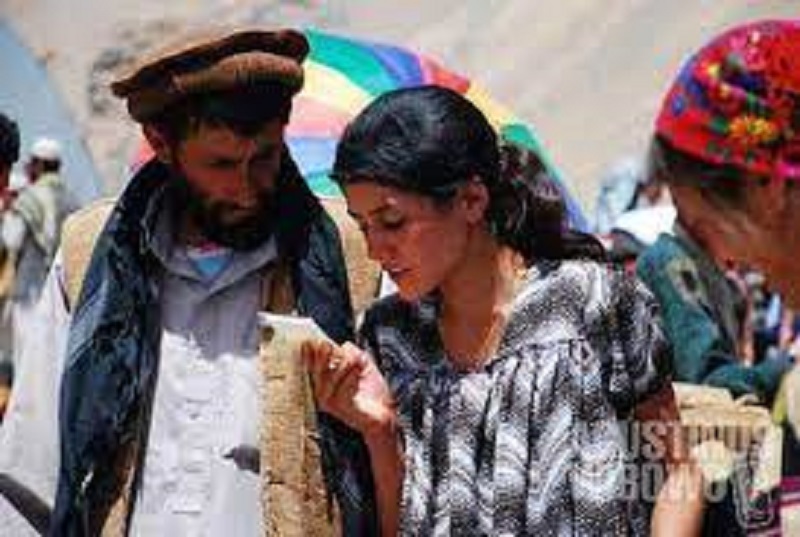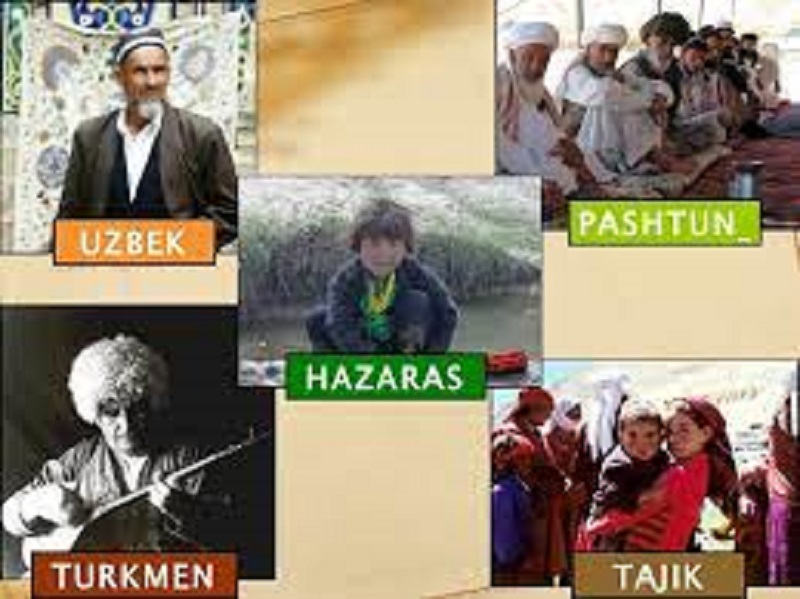
They have round faces, small noses, slanted eyes like that of the Chinese, fair skin, black hair and an overall Asiatic look. They are Hazaras, a minority ethnic tribe based in the central region of Afghanistan like Bamiyan, and can be easily recognized even in a crowd because of their distinct physical features that set them apart from most Afghans.
Besides, unlike the majority Afghans, Hazaras speak Turkic languages alongside Farsi and follow the Shia branch of Islam. Their unique features and Shia faith, make them intensely attached to their tribe which predominantly exists in rural Afghanistan. Having Mongol and Turkic lineage, they don’t look
exactly the same as Turks or Mongols, but a mixture of the two.

Marriages mostly take place within the group. Since it has been a male-dominated society for centuries, daughters have had to obey and marry men of their fathers’ choice, so marriages outside the tribe have been always impossible at least in rural life. Women’s identity has been non-existent in the tribe. Whereas, inter-marriages are common among other minority ethnic groups such as Tajiks and Uzbeks and majority Pashtuns as they all belong to the Sunni faith. But there are exemptions that the Pashtuns can also marry Sunni Hazaras.
With no basic learning or schooling, most Hazaras are among the poorest in the country and live in the rugged highlands where there are no basic facilities to say, like electricity. They earn their livelihood by rearing sheep, goats and cattle.
However, the Hazara girls who live in the cities have of late thought that they don’t want to look Hazara. Obsessed with the big eyes and noses, which are the common features of Afghan women, they think the Hazara look is not normal and least pretty.

Tajiks are the largest minority. They speak Dari and are Sunni Muslims. Originated from Eastern Persia, Tajiks are located in the West and North Afghanistan.

Uzbeks are a Turkic ethnic group who had migrated from Uzbekistan and living near the Uzbekistan border. They speak Persian and Uzbek. There are other minority ethnic groups with very thin population, each of them having unique physical features.
In contrast, the dominant Pashtuns with Persian ancestry have white or olive skin, black or blonde hair, dark brown eyes and it’s also not unusual that they have blue or green eyes too. They speak Pashto and Dari languages and follow Sunni faith.
Some historians claim the origin of green eyes is from around 350 BC when the ancient Greek army under Alexander had invaded the region and his soldiers assimilated with the local population.

Based in southern plains like Kandahar and north-eastern region of Afghanistan, Pashtuns have left an imprint in the flourished socio-cultural life. Apart from politics, they have contributed immensely in the areas of literature, music and fine arts as well as sports and games. Unlike minority tribes, Pashtuns are ambitious and hardworking. It is also said that their resilience is phenomenal. Pashtun people are well known for their hospitality and charity. Being very creative and great entertainers, they could win easily the hearts of outsiders visiting their villages.
According to Afghan scholars, Pashtun people maintain social relationships well, particularly in the villages where every person knows each other and even in cities, they establish networks of their tribe people. The scholars say typical to all Afghan tribes, Pashtun men are very proud of their women and of late have discarded the custom of polygamy. There were instances where Pashtun villagers had been engaged in fierce battle with enemies (intruders) to protect their women and had avenged the insult by outsiders to the women.

Despite this, the status of Pashtun women has not been different from Hazara or Tajik women as they do not exist outside the family and community. Pashtun men believe that through education of women, their employment and access to economic resources, family and kinship networks would be destroyed and moreover their control over women could be challenged. Any attempts by the governments to alter the biased system or rearrange the pattern so as to improve the status of women have had faced stiff resistance from tribal elders.
Most Pashtuns, especially women, are not supporters of the Taliban and have opposed their hate campaign against Hazaras. The Taliban’s perspective of Hazara has been rooted in certain historical events and Shia-Sunni difference. The Taliban comprising mainly Sunni Pashtuns hate Hazaras for their distinct look and Shia belief.
The Taliban believe that Hazaras are the descendants of Genghis Khan, the founder of the Mongol empire. Mongol soldiers who swept through the region in the 13th century had mixed with local Afghans.
Being one of the ethnic minorities, Hazaras are entitled to all privileges as per the constitution of Afghanistan, but they have been discriminated against and suppressed systematically by the successive governments. Their participation in active politics and governments, share of employment and even physical presence in public life have become almost nil or significantly small.

A peace-loving community though they had joined the National Front during the civil war, Hazaras don’t have animosity towards other tribes. But they don’t trust the Taliban who instead of giving their due in governments have denied Hazaras the fundamental right to live with dignity and freedom. The Hazara voices have always been ignored. Their experiences at the hands of the Taliban are horrific. They say they have been targeted by the Taliban because of their Shia faith.
The Taliban have unlawfully detained, tortured and killed Hazara civilians to silence their voices against the government and the outfit’s brutalities. It has been reported that in Ghazniand Daikundi provinces, the Taliban militia forcefully evicted a number of Hazara families and occupied their houses. The authorities did not intervene even after receiving many requests from the displaced.
The Taliban didn’t like anything relating to Hazara. They didn’t spare even the Buddha statue in Bamiyan, which, according to historians, had a Mongol-type face. Afghans are in a shock because despite the fact that the misguided Taliban don’t represent the people of Afghanistan and not even Pashtuns, they form governments using muscle power and spreading hatred against minority ethnic groups.
BY: KS Rajagopal

Post Your Comments